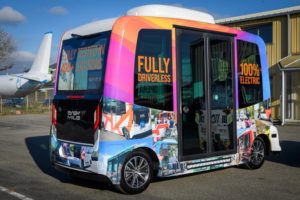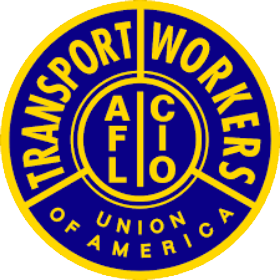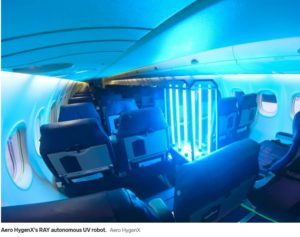Transportation Technology Campaign Newsletter
Issue #6
March 14, 2022
If you see or hear about new technologies or services, please send us an email, TransportationTech@twu.org
TWU President Samuelsen to Congress: “Overreliance” on Transportation Automation Can Be Deadly
TWU President John Samuelsen, testifying in the House on the future of autonomous vehicles, warned members of the Transportation and Infrastructure Committee that the deadly Boeing 737-MAX crashes were the result of “overreliance on automation” systems that “overruled commands from the pilots.” Letting the human pilots intervene would “have saved hundreds of lives,” Samuelsen told lawmakers. Similarly, Samuelsen pointed to the tragic 2009 Washington DC WMATA Metro rail accident that killed 9 people including the operator and injured more than 70 passengers. The Metrorail system’s automatic train control system stopped detecting the presence of a stopped train ahead and despite a last second attempt to intervene the operator could not avoid the rear-end collision.
“Advanced technologies should assist operators and improve safety, not substitute for the skill and judgement of a well-trained driver,” Samuelsen said. “Such overreliance on automation technologies can lead to disaster whether you’re traveling at 30,000 feet or in a public transit bus on our city streets.”
Robot Named RAY Instead of Humans Disinfects Aircraft Cabins
Start-up Avelo Airlines claims it is the first airline in the US to use a robot instead of workers to sanitize its aircraft cabins “against the spread of COVID-19.” The technology, developed by Aero HygenX, uses ultraviolet light in the sanitization process and the maker says it can be operated by one flight crew member. Germany’s flagship airline, Deutsche Lufthansa, also uses the sanitizing robot. It is also used to sanitize buses and trains.
Avelo claims its robot, named “RAY,” destroys up to 99.9% of harmful pathogens in the air and on the surfaces of aircraft cabins, galleys, lavatories and flight decks. The robot also will be used in Avelo’s space in airport terminals.
The airline’s CEO says, “RAY is safer, faster, more cost-effective and a more sustainable solution than the conventional chemical-based manual disinfection process used by most airlines.” Translation: we can cut labor costs by eliminating the humans.
Cruise, Waymo Snag California Permits to Charge for Driverless Rides
GM’s Cruise and Google’s Waymo can now pick up Bay Area passengers in autonomous vehicles and charge a fare. While so-called “safety drivers” will be required on-board, this is the next step towards providing Uber-like ride-hail service without a human operator.
Cruise can offer service from 10am to 6pm at up to 30 mph while Waymo can offer this unproven technology in parts of San Francisco at a whopping 65 mph. Neither company can offer service during dense fog or heavy rain, which underscores the limitations of this technology.
“This is yet again a wake-up call to elected officials and regulators that action is needed to stop the reckless deployment of technologies without rigorous federal rules in place,” said TWU President John Samuelsen. “Autonomous vehicles crash at a higher rate than regular, driven cars yet we are unleashing driverless car experiments on our roads. TWU is committed to keeping the self-driving experiments of Big Tech out of our public transit systems.”
VIDEO: “Oh my God, this is so trippy. It’s going pretty fast.”
Say It Isn’t So: No Driver in Autonomous Bus Service in France

This isn’t some technologist’s dream – it’s happening on France’s roads: bus service without an operator on-board. The driverless EZ10 shuttle, which carries up to 12 riders, has been approved by France’s transport minister for use “without a human attendant,” according to Euronews. Easymile, the maker of the shuttle, says don’t worry: if something goes wrong there can be “remote supervision.” Click here to read the full article.
“This should terrify transit users everywhere,” said TWU President John Samuelsen. “Our members’ decades of experience will tell you that a skilled, qualified operator is needed on-board, not in some ‘remote’ location. That is why TWU is waging a national technology campaign focused on making sure safety regulators hold autonomous vehicle makers to the highest safety standards and that no matter the level of automation achieved, there is a skilled transit operator on any bus or vehicle in service.”
WHAT WE’RE READING
‘I’m the Operator’: The Aftermath of a Self-Driving Tragedy, Wired
Study Says Automation Helped Kill Up to 70% of US Middle-Class Jobs Since 1980, Business Insider
Euro Pilot and Cabin Crew Unions Fighting Airbus Plans for Single Pilot Aircraft, Euroactiv

